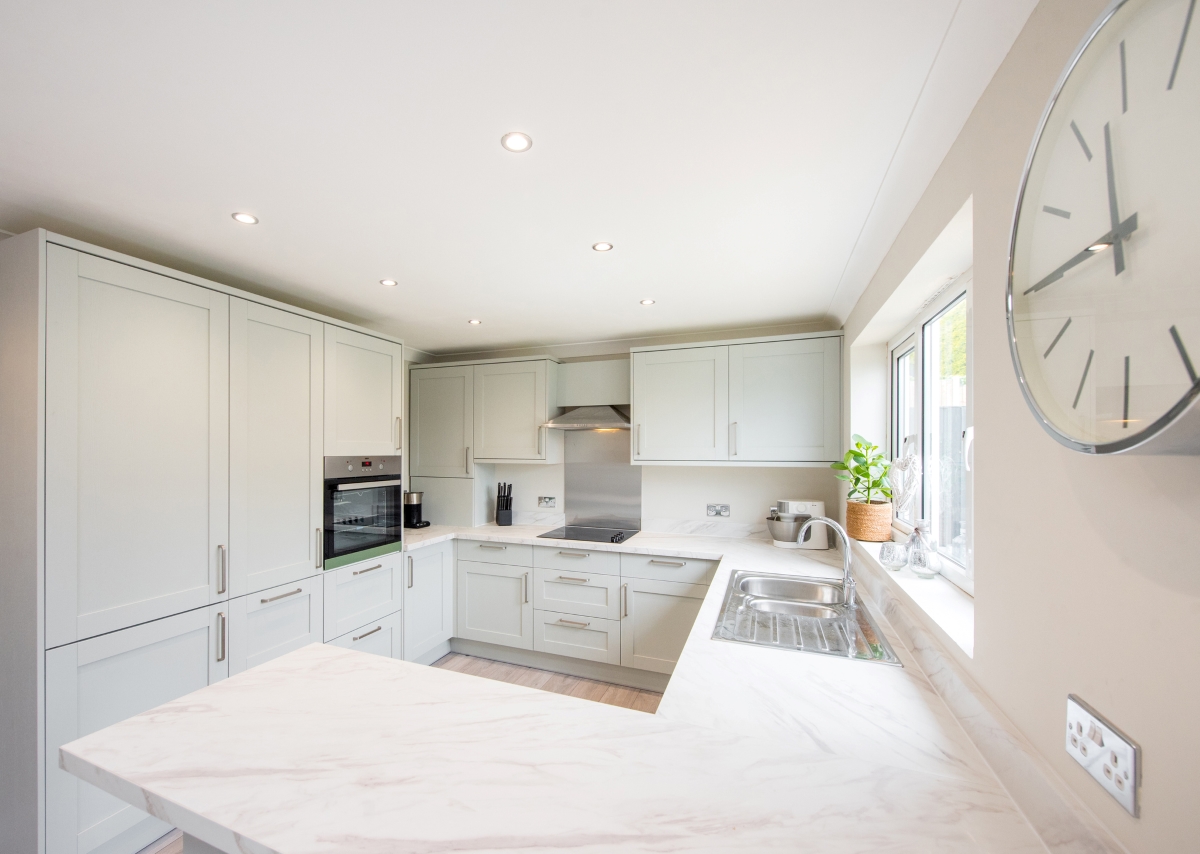
We may earn revenue from the products available on this page and participate in affiliate programs. Learn More ›
When you’re remodeling a kitchen on a budget, laminate is the best affordable option for countertops.
Nowadays this tried-and-true material comes in a wider array of designs than ever before, from beautiful solid colors to interesting wood looks with embedded texture to lovely stone patterns with a variety of finish options.
Before selecting laminate as a countertop material, it’s helpful to know the plusses and minuses. We asked Kent Brasloff, principal of New York-based design firm Ask Kent and Co., and vice president of programs for the New York chapter of the National Kitchen & Bath Association, to share his insights on buying laminate countertops. Here’s what he had to say:
What is laminate?
A combination of plastic and paper—interestingly, though, generally not recycled—and sometimes board. These materials are formed into a thin layer and colored or manufactured with naturalistic or textured designs. This layer is then laminated to particleboard or chip board.
What makes laminate a good choice for countertops?
It’s flexible and can be used in a variety of ways and in a variety of spaces: a kitchen, bath, work room or laundry room. Laminate can also be used on a shop table or as a furniture surface. Available in a multitude of colors and textures, it’s easy to work with and can be cut into any shape, including forms with sharp corner points or with a smooth radius. It’s quite durable.
What is the difference between a low-cost laminate and an expensive one?
The key difference between high- and low-end laminates is generally the finish of the material. Higher-end products offer greater variety in luster or sheen and texture. They also come in a broader range of colors. The cost of the laminate will be affected by whether or not there is a built-in backsplash and how high or low the backsplash may be.
What are the maintenance requirements for laminate countertops?
To clean the surface, use a damp cloth or sponge and a mild soap or detergent. To remove difficult stains from coffee or tea, use a mild household cleaner and baking soda mixed into a paste, scrubbing with a stiff nylon bristle brush and being careful not to mar the surface finish.
Slideshow: Trending Now: Laminate Countertops
Stubborn stains may call for gently rubbing the spot with a cotton ball that has been saturated with undiluted household bleach or nail polish remover. Prolonged exposure of the laminate surface to bleach will cause discoloration, so always rinse thoroughly with warm warm water and wipe dry. Do not use steel wool and other abrasive materials or harsh chemicals, such as a rust remover. Also, avoid placing hot pots and pans on the surface, as its level of heat resistance is limited.
What are the pros for choosing laminate?
Its durability, range of color and design options, flexibility to accommodate unique shapes, and ease of installation.
Its cons?
On the downside, laminate shows scratches, which usually be cannot filled or repaired. And to some people it can look “cheap” or “papery”. It hasn’t been popular for quite some time in the US, but it is stilled used extensively in Europe, often in high-end contexts. Also, it gets brittle and chips with age.
How much does it cost?
A fair range would be between $35 and $40 per linear foot at retail. Of course cost may be affected by the intricacy of the design and whether the counter will have a “self” or “beveled” edge. Cost will also be impacted by countertops with a lot of corners, a wide radius, or a built-in backsplash. Laminates with standard finishes are more affordable than those with upgraded finishes.
What are its installation requirements?
After the contractor installs your cabinets (or support structure), the countertop area will be templated and made to fit for installation by a professional.
